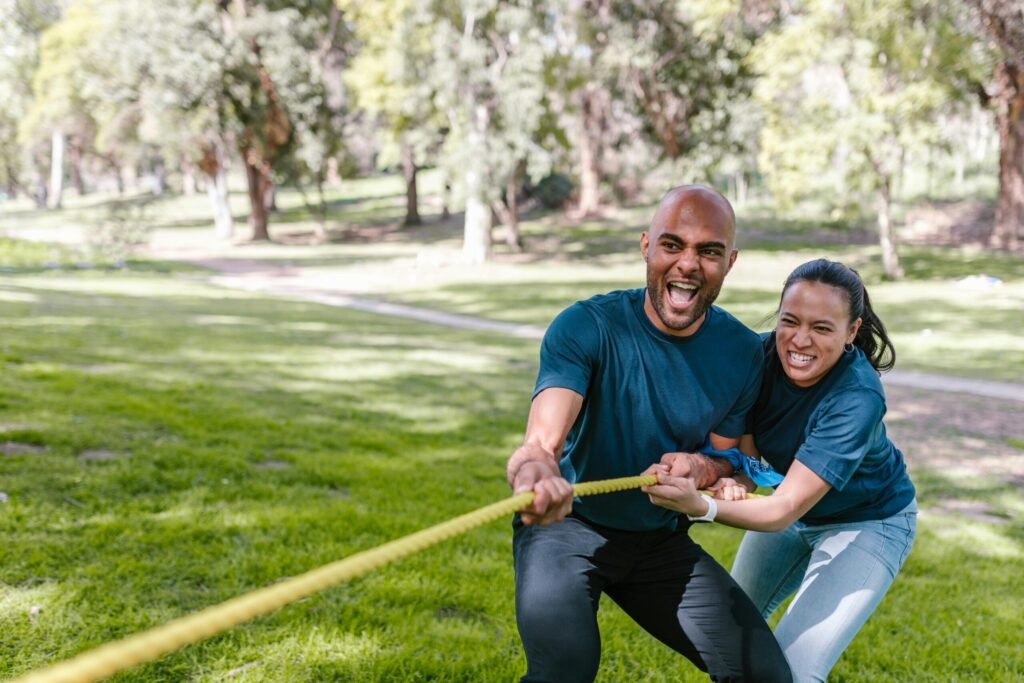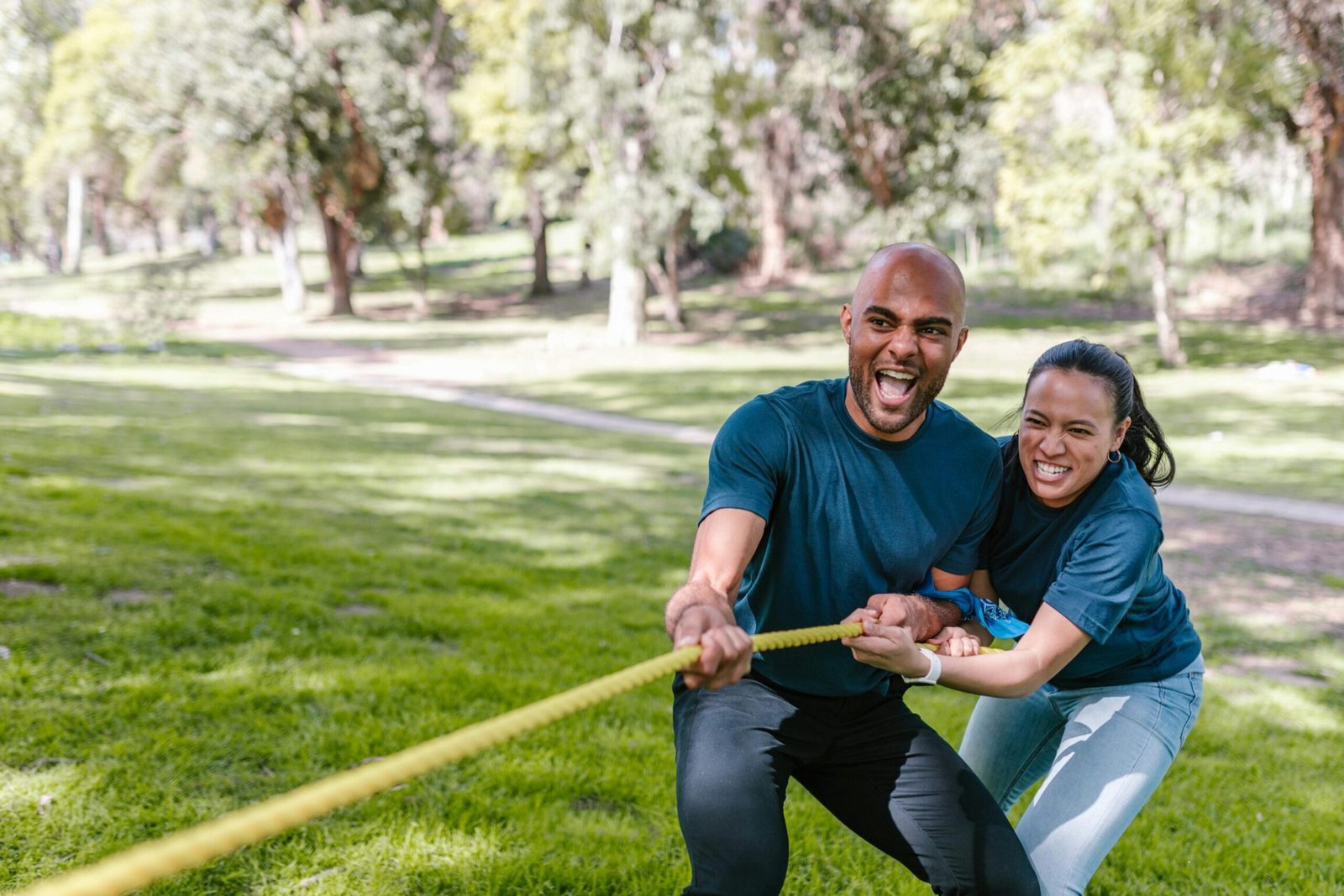
Introduction
Most people focus on push-based exercises like push-ups and dips, often neglecting pulling movements. However, pulling exercises are just as crucial for muscle balance, posture correction, and injury prevention. Strengthening the back and biceps improves performance in daily activities, enhances athletic ability, and prevents muscular imbalances that could lead to pain or injury.
While traditional pulling movements require barbells or pull-up bars, there are several effective bodyweight pulling exercises that can be done at home or while traveling. Let’s dive into the best pulling exercises and their real-world benefits.
1. Pull-Ups
Muscles Worked: Latissimus dorsi, biceps, rear delts, core
How to Perform:
- Grip a pull-up bar with palms facing away, hands slightly wider than shoulder-width.
- Engage your core and pull your chest toward the bar.
- Lower yourself with control.
Real-World Benefits:
- Enhances grip strength for lifting objects.
- Improves posture by strengthening the upper back.
- Builds endurance for activities like rock climbing and swimming.
2. Inverted Rows (Using a Table or Bar)
Muscles Worked: Upper back, biceps, core
How to Perform:
- Lie under a sturdy table or bar.
- Grip the edge and pull your chest toward it.
- Lower yourself with control and repeat.
Real-World Benefits:
- Develops pulling strength needed for carrying and lifting.
- Enhances core stability for sports and daily movements.
- Reduces risk of lower back pain by strengthening postural muscles.
3. Towel Rows (Using a Door or Pole)
Muscles Worked: Biceps, back, grip strength
How to Perform:
- Secure a strong towel over a door and grip both ends.
- Lean back and pull yourself forward.
- Control your descent and repeat.
Real-World Benefits:
- Improves grip strength for tasks like opening jars or carrying heavy bags.
- Strengthens the biceps and back for better athletic performance.
- Great alternative for those without access to a pull-up bar.
4. Doorframe Rows
Muscles Worked: Lats, biceps, forearms
How to Perform:
- Hold onto both sides of a doorframe.
- Lean back slightly and pull yourself toward the frame.
- Keep control on the way down.
Real-World Benefits:
- Strengthens muscles used in daily pulling tasks.
- Can be done anywhere without equipment.
- Reduces shoulder imbalances caused by excessive pushing exercises.
5. Superman Pulls (Floor Exercise)
Muscles Worked: Lower and upper back, glutes, core
How to Perform:
- Lie face-down with arms extended forward.
- Lift your arms and legs off the floor.
- Pull your elbows toward your ribs, then extend again.
Real-World Benefits:
- Improves lower back endurance to prevent back pain.
- Enhances shoulder mobility and flexibility.
- Strengthens core muscles for better balance and stability.
6. Towel Curls (For Biceps and Forearms)
Muscles Worked: Biceps, forearms, grip strength
How to Perform:
- Loop a towel around a heavy object and pull it toward you.
- Use a slow, controlled movement.
- Focus on squeezing your biceps at the top.
Real-World Benefits:
- Strengthens the grip for carrying groceries and lifting objects.
- Builds arm endurance for sports like tennis or golf.
- A great alternative when no weights are available.
7. Isometric Towel Pulls
Muscles Worked: Lats, forearms, core
How to Perform:
- Hold a towel in both hands and try to pull it apart.
- Maintain tension for 30 seconds, then relax.
Real-World Benefits:
- Enhances grip strength for manual labor and sports.
- Activates key pulling muscles even without movement.
- Improves muscular endurance for daily tasks.
8. Wall Pulls
Muscles Worked: Rear delts, upper back, core
How to Perform:
- Stand facing a wall, place hands flat against it.
- Lean in and pull yourself toward the wall.
Real-World Benefits:
- Strengthens posture muscles to reduce slouching.
- Helps prevent shoulder imbalances.
- Easy to do anywhere, requiring no equipment.
9. Hanging Shrugs (Using a Bar or Ledge)
Muscles Worked: Traps, shoulders, grip
How to Perform:
- Hang from a sturdy bar or ledge.
- Shrug your shoulders up, hold, then lower slowly.
Real-World Benefits:
- Improves grip and shoulder stability.
- Helps prevent shoulder pain and stiffness.
- Strengthens upper traps for better posture.
10. Reverse Plank Pulls
Muscles Worked: Rear delts, traps, core
How to Perform:
- Sit on the floor with legs extended.
- Place hands behind you and lift your hips while pulling your chest up.
Real-World Benefits:
- Strengthens back muscles for upright posture.
- Improves core stability for daily movements.
- Helps counteract effects of sitting all day.
Why Pulling Exercises Matter in the Real World
Incorporating pulling movements into your workout routine provides immense benefits beyond aesthetics. Here’s why they matter:
- Improved Posture: Pulling exercises counteract the forward-leaning posture caused by excessive screen time and sitting.
- Enhanced Grip Strength: Grip strength is crucial for everyday tasks like carrying groceries, opening doors, and lifting objects.
- Injury Prevention: Balancing pushing and pulling movements reduces the risk of muscular imbalances and injuries.
- Functional Strength: Activities such as climbing, swimming, and lifting all rely on strong pulling muscles.
- Core Activation: Most pulling exercises engage the core, improving balance and stability.
Conclusion
Pulling exercises are a fundamental component of any balanced fitness routine, even without gym equipment. By incorporating bodyweight pulling movements into your workouts, you can develop essential strength that enhances daily activities, prevents injuries, and improves overall fitness.
Whether you’re at home, traveling, or just looking for alternatives to traditional gym workouts, these exercises will keep you strong and functional. Start incorporating them today and experience the benefits firsthand!
Stay strong, stay balanced, and keep pulling your way to better fitness!




